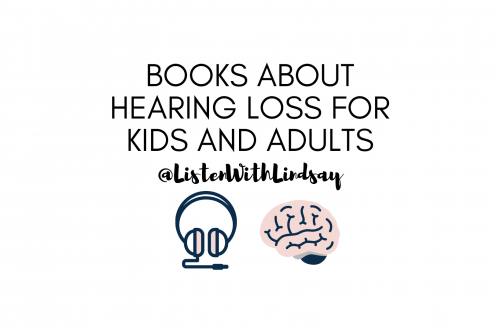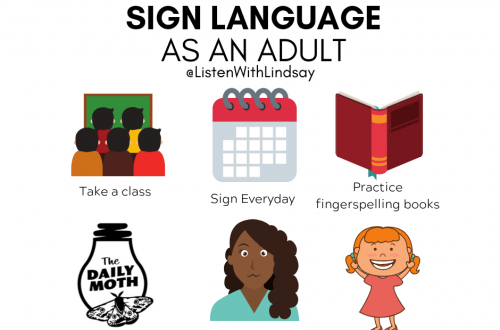5 Things to Explain at a Teacher Inservice for Deaf and Hard of Hearing Kids That Are Not the Audiogram
Last week I started a new job as an educational audiologist, woo hoo! I’m excited about this new role. Since it’s back to school time, I’m working with some incredible Deaf and Hard of Hearing teachers to prepare to inservice or train the Deaf and Hard of Hearing (DHH) students’ classroom teachers. I noticed that the presentations often include the audiogram which got me thinking…why? I know the educational audiologist, DHH specialists, and Auditory Verbal Therapists need to see and understand the student’s audiogram, but the classroom teacher?? The calculus teacher? The ceramics teacher? For what? So, here’s 5 things I think are more important.
The communication strategies we’re about to discuss are not going to just accommodate this one student, they are going to be useful for every single class you teach for the rest of your career. They could potentially improve the behavior of your students. They also will improve your relationships.
Teachers are so busy and stressed at the beginning of a school year and it’s important to help them understand the WHY of it all. Why should they care? Why should they change how they’ve been doing things? (Besides the fact that it’s in the IEP so they’re legally required to… which is the equivalent of ‘because I said so.’)
With 60% of people over 60 and 80% of people over 80 having significant hearing losses it is inevitable that they will be communicating with more DHH people throughout their lives.
If the key to a good relationship is good communication, then learning communication strategies will improve their relationships.
Even in the mainstream classroom, it is very likely that there will be other students in the class that are Autistic, have ADHD, have executive dysfunction, learning disabilities, auditory processing disorders, etc. Communication strategies like giving all auditory instructions in written form, repeating and summarizing key points, repeating answers given by other students, etc. will also be helpful to those classmates as well. When you use these strategies you reduce the cognitive load which allows more mental energy for learning new information. It has the potential to reduce stress and improve behavior by keeping more students in the class on task.
2. Be patient
DHH kids need more time to process information (especially auditory information). Sometimes they need to ask the person next to them for clarification about what you just said. If it’s noisy or you’re a few feet away or they can’t see you they may not hear you. Be patient! They are working VERY hard to hear and understand you.
3. Slow down
If a student asks a question, repeat the question in the answer. Assume people missed it.
When engaging the class in a discussion have the students raise their hand before they answer. Then repeat/summarize the answer they gave before moving on to to the next student.
Group conversations can be really difficult for DHH people. By the time they localize which of their classmates is shouting out an answer, they’ve missed the first half of what is said. This can make them feel left out and they may tune out if you don’t use this strategy. Again, the whole class will benefit from additional time to process this incoming information.
4. Don’t say “never mind” or “it doesn’t matter” or “I’ll tell you later”
This is a very dismissive message that DHH people hear way too often. If they were willing to put themselves out there and say “what” or ask you to repeat the punch line of the joke, respect that and answer. This is a great way to be an ally to DHH people and it’s important to model this for other students. Everyone wants to feel included.
5. The student may look like they’re “daydreaming” “not paying attention” or “only hear when they want to,” but this is a common misconception!
DHH people experience listening fatigue. Their brain expends much more energy trying to understand and process what is being said everyday. This leaves them feeling physically and mentally exhausted and can even lead to headaches or feeling like they need a nap everyday after school. This is not a character deficit. This is not a matter of behavior or effort.
Honorable mentions for additional things I’d include before the audiogram:
- Preferred language (deaf and hard of hearing not hearing impaired)
- Don’t ever ask them to use their voice if they have an interpreter, even if you know they can talk
- Interpreter etiquette
- Consider involving other students in the process of making materials more accessible- i.e. have students in charge of making sure the captions are on for every video. This sends the message that the burden of accessibility should never be entirely on the person with the disability, it is all of our responsibility to make the world a more accessible place.
- Where to find additional resources if they’re interested in learning more about DHH people from actual DHH adults (like the book Deaf Utopia by Nyle DiMarco)


